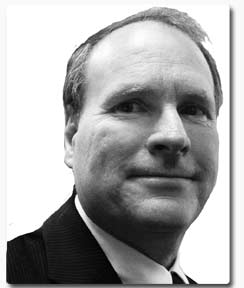

The 20?
The number 20 refers to the 80/20 business rule. The rule states that 20 percent of the people do 80 percent of the work. In churches, we’ve observed that 20 percent of the people pay 80 percent of the bills. While there is nothing God-ordained about the 20 percent, it seems to be consistent with my personal experience. In this podcast, I want to offer some reflections on what congregational leadership through the 20% might look like in your church.
Before that, I want to assure you that my goal is not to divide the church into two groups, those who count and those who are dead weight. Everyone counts in the church. It is prevalent for people to move in and out of that 20%. Often it just depends on a person’s stage of life. Sometimes it has to do with personal passion. It is rare for a layperson to remain in the 20% through-out their lives. It does happen, and it is a gift to the church when it does because it keeps the 20% refreshed and vibrant.
I also want to assure you that I’m not implying that I want you to ignore 80% of the people in your church. While your ministry will grow in effectiveness as you strive to spend 80% of your time with the 20% of the members who are contributing to the department, you must not ignore the remaining 80%.
20% Leadership means identifying your ministry’s 20%. First, who are the 20% in your ministry? They are the people who invest a significant percentage of the finance and time resource for the sake of the church. They are the people who show up to help with the ministry activity of the church with little need for recruitment. Don’t let titles or wealth cloud your assessment of the 20%. As Jesus praised the Widow’s mite, the 20% are identified by their sacrifice, not the size of the contribution.
Second, What is the 20% ministry activity in your church? What’s currently happening in your ministry that is reaching the lost with the Gospel and discipling the found? To help identify the 20%, what do you do that engages the most people from the community? What do you do that involves the most people from your church? While these activities may not be the 20% of your activity, they do indicate the place to start to define your ministry’s 20%.
Third, what is the 20% that is holding your ministry back? The question flips the 20% upside down. As powerful as the 20 is for the positive, it can be a negative force working against you. We can make significant changes in our ministry and see little results if we don’t identify the 20% that is holding the ministry back. The negative 20% might be weak communication systems, service times that need to be moved, or a grumbling member with whom we don’t want to speak.
Fourth, How are you using your time? 20% leadership means mapping your work-week. Once you’ve identified the 20% from the point above, you face the challenge of remapping your work week so that you spend 80% of your time with the right people, doing the right things that will make the most significant impact upon your ministry.
I’ve never met a pastor or a church that was not plenty busy to fill a 70-hour work-week. However, as you reflect upon your activity, how many people are being baptized or confirmed in the Christian faith? How many people are added to the numbers of those involved in the church’s ministry? How many people are involved in your church’s discipleship process? If the number is not increasing or the increase is not keeping up with the loss, then much of what you’re doing isn’t working.
Mapping your work-week means giving some stuff away to others. It may mean dropping some activities. A simple way to plan the week is to add up the critical core activities and subtract them from your total number of work hours available. These core activities include sermon preparation, Bible Class preparation, worship planning, and critical pastoral care visits. Take the remaining thirty to forty hours per week and begin to allocate 80% of the time to the 20% activities that can make a difference in your ministry. Spend 80% of your time empowering key leaders, developing productive ministry activities, and addressing those things that are inhibiting ministry. The remaining 20% should be allocated to phone calls, shut-in calls, and pastoral care for the remaining 80% of your membership.
Fifth, where are you investing your finances? 20% leadership means prioritizing your budget. As you did with the work-week, subtract the fixed monthly expenses from your budget. Unlike the work-week, allocate 100% of the remaining resources to those activities that support the 20% leaders and activities in your ministry. The fixed operating expenses should be sufficient to meet the needs of 80% of the congregation.
I know that many of our ministries have few, if any resources left after the essentials are deducted from the income. The genius of the 80/20 rule is that less really is more. When you focus on doing one thing really well, you will see a more significant impact than focusing on doing more with fewer resources. For the 80/20 rule to work, you’ve got to know the critical 20% to address with your precious resources. If the expenditure will not have an immediate, positive impact upon your ministry, don’t expend the resources.
The 80/20 rule is a powerful tool for releasing ministry in surprising ways. I want to challenge you in your leadership to answer the simple question, what does 20% leadership look like in my ministry? If you’d like help reflecting through the answer, give me a call.